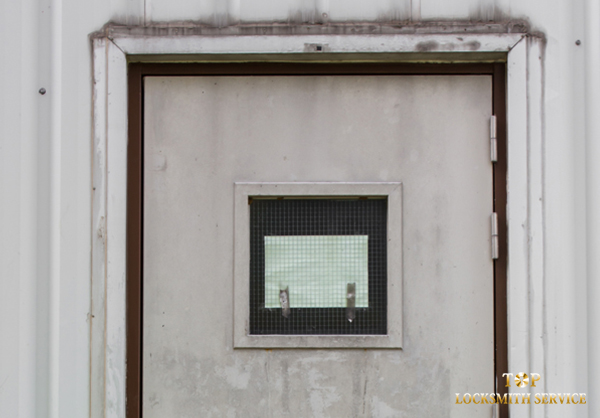Safe rooms are areas where people can go in situations of danger, whether the context is weather, terrorism, or crime related. These rooms are installed inside commercial businesses or private residences to protect people in the event of any sort of threat, and they often contain equipment in order to speak to authorities in the event of any sort of emergency.
What makes a safe room?
Safe rooms are usually made of an exterior grade metal door with a solid core, a strong deadbolt, and strike plate protected, long hinged screws to protect it from being battered. Alarm systems, access controls, security cameras, and even a peephole can all be implemented.
These rooms are often stocked with survival gear like blankets, water, food, flashlights, self-defense tools, and a portable toilet. They can be ventilated with an external system, and can be connected to safety shafts. They can be built with concrete walls, which is an option that isn’t feasible in wood frame buildings (unless it’s in the basement, or if the building is structurally reinforced.)
Depending on the specific intentions for the safe room, it could be built with extra protection for varying circumstances, like storm-resistance for extreme winds and flying debris. They can be hidden in non-descript locations, even behind decoy objects or furniture.
Uses of/for Safe Rooms
Officially set government safety codes help guarantee the safety and reliability of safe rooms. There are various safety codes for various risks and circumstances. Every year, the International Building Code updates their criteria – which is then adopted to varying schemas on a state to state basis. Some areas that are prone to strong winds or hurricanes are required to have built-in hurricane solutions for example.
The use of safe rooms in residences definitely increases the level of security, but may not always be warranted. It’s worth it to consider the total sum of risk factors affecting the space, as well as the amount of money in assets that may be at risk – this should be compared against the cost of installing a safe room when one is determining the necessity of installing one inside their home or business. Sometimes, a sturdy and well concealed safe, along with the usual bevy of security tools like locks, deadbolts, cameras, bright lighting, and deterrents will provide the necessary security. That being said, in situations where it is warranted by the combination of risk factors, there’s simply no substitute for a professionally installed safe room.
